MARPLE AND MARPLE BRIDGE
Marple Bridge Grid Ref: SJ 965 894
Dates: 26 May 2009, 29 Apr 2013, June 2013, 7 Aug 2013, 11 March 2014, 19 Aug 2014, 17 Oct 2014, 6 Feb 2015, 22 Apr 2015 and 15 June 2022
These photographs were taken over a period of six years on one of my favourite walks. Starting from the car park on Marple Ridge, you walk on the road to join a footpath on the right which takes you down to the Peak Forest Canal. Continuing in a northerly direction you come to the junction with the Macclesfield Canal and walk down the line of locks. At this point you can go off to the left into Marple or continue along the tow path until your reach Station Road and descend the hill past the station and St. Martin's into Marple Bridge. An alternative way back to Marple Ridge is to go into Marple and walk up Church Lane which then becomes Ridge Road, giving you the opportunity to see All Saint's Church.
For the walk to the Roman Lakes, I parked in Brabyn's Park in Marple Bridge then followed the footpath southwards from the end of Low Lea Road. From Brabyn's Park, if you follow the canal you can visit the famous aqueduct taking it over the Goyt and the railway viaduct. Within Brabyn's Park you can see the cast iron bridge. Both Marple and Marple Bridge have a range of good cafes and there is also one at the Roman Lakes.
 |
|
 |
| Canal side house |
|
At the top of the flight of locks into Marple |
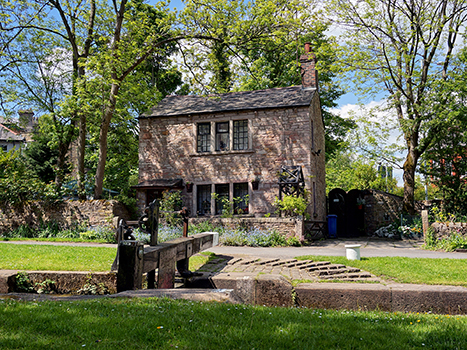 |
|
 |
| House in Lockside |
|
Canal lock |
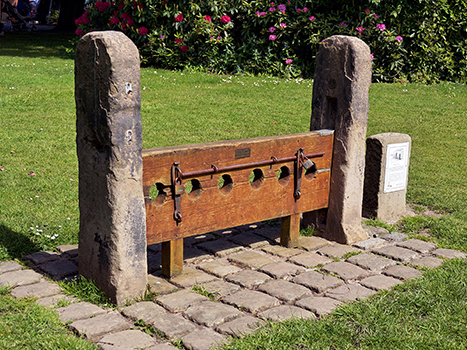 |
|
 |
| Detour into Marple Memorial Park to see the stocks |
|
Stone from top of Olknow's mill with snow in Feb 2015 |
 |
|
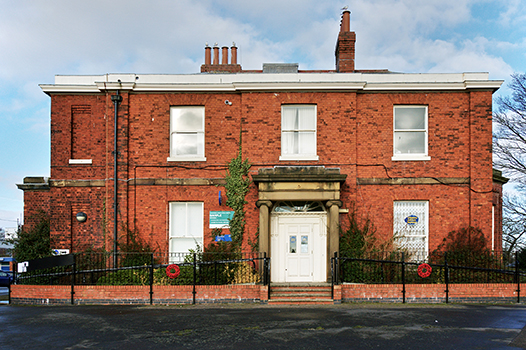 |
| War Memorial and former Council Office |
|
Former Council Offices |
 |
|
 |
| Judge Bradshaw's sun dial pedestal |
|
Market Street in Marple |
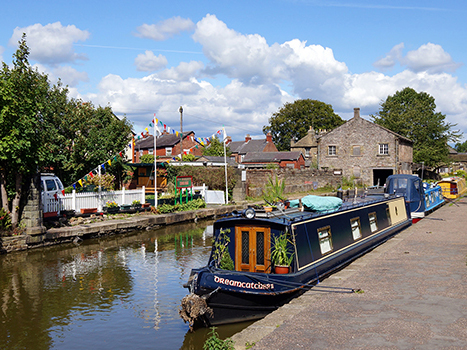 |
|
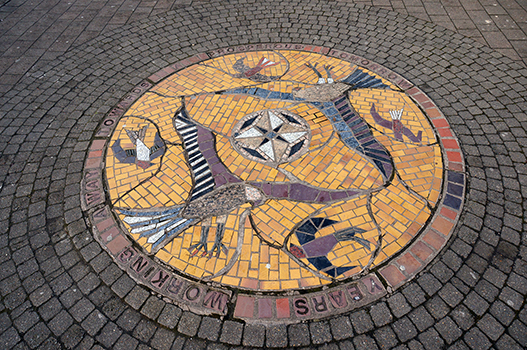 |
| The Macclesfield Canal near the junction with the Peak Forest |
|
Pavement: "Years working away towards a prosperous tomorrow" |
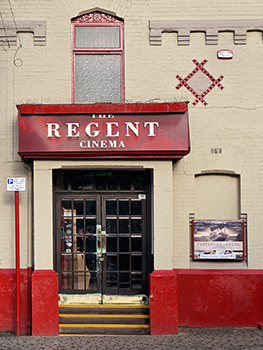 |
|
 |
| The Cinema on Stockport Road. |
|
St. Martyn's in the snow. |
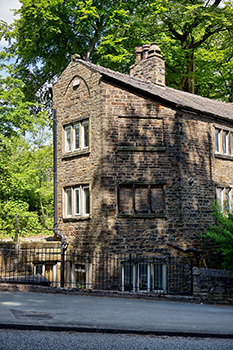 |
|
 |
| Lodge for Brabyn's Hall and Park in Station Road |
|
Marple Bridge carries the A626 over the River Goyt |
 |
|
 |
| The inscription by the clock reads "1898" |
|
At the bottom of Brabyn's Brow |
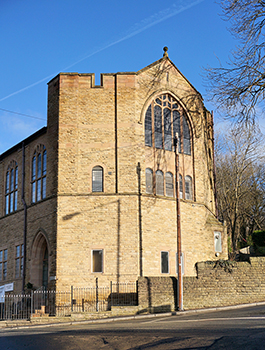 |
|
 |
| The Chapel at the corner of Town Street and Hollins Lane |
|
Norfolk Arms on Town Street, Marple Bridge |
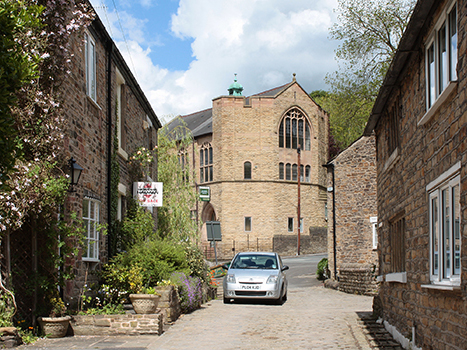 |
|
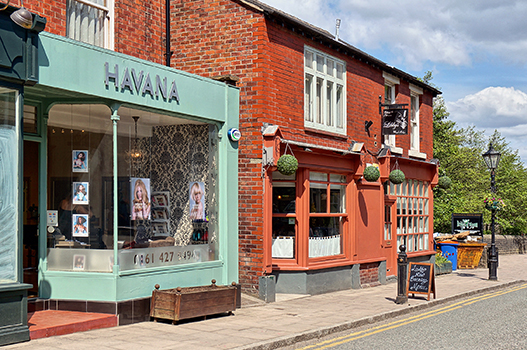 |
| View towards the chapel on Town Street from Low Lea Road |
|
Shop and Libby's cafe in Town Street |
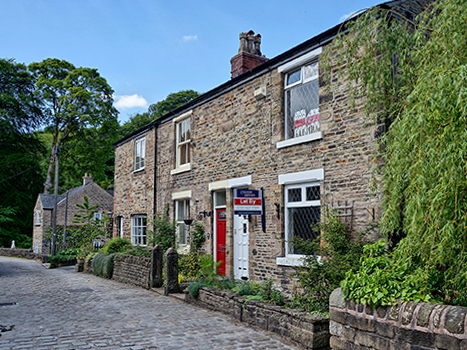 |
|
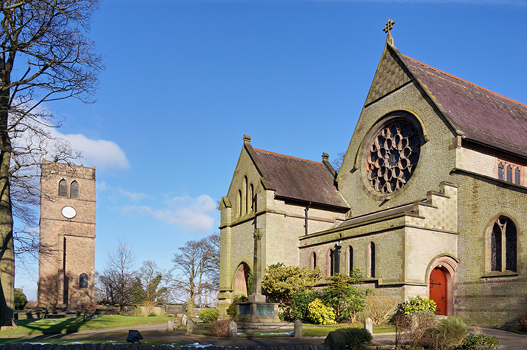 |
| Cobbled surface in Low Lea Road |
|
All Saints church and tower, Church Lane, Marple |
 |
|
 |
| Canal Aqueduct and Railway Viaduct |
|
Cast Iron Bridge in Brabyn's Park |
 |
|
 |
| View towards Romily in 2022 |
|
Railway viaduct runs alongside the canal aqueduct, 2022 |
According to Arthur Mee, in his book, King's England, Cheshire:
Marple is romantically set in the rocky wooded valley of the River Goyt, part of the little town clinging to the river, the rest to the hilltop, looking across to Mellor Church crowning the opposite ridge. There are wonderful views of Derbyshire's rolling hills and moorlands, and of a far-flung industrial countryside where towers and spires and great chimneys are mingled with patches of woodland, carrying the eye on a clear day to Liverpool and the ships on the Mersey.
I suspect that many of the mill chimneys of the 1960s have been demolished. Mee remarks on the flight of 16 locks on the Peak Forest Canal. He writes of the towerless church of St. Martin's, where one of the windows is by Christopher Whall. St. Martin's on Brabyn's Brow was built at the expense of Miss Maria Anne Hudson. It was designed by J. D. Sedding and built between 1869 and 1870.
At the top of the town, Mee says there are two churches of All Saints in one churchyard, one with a tower clock still telling the time and ringing its bell for its newer neighbour. When Mee was writing, the old church still stood and he mentions a tall pulpit and shields with coats of arms on some of the pews. The Isherwood pew in the chancel had its own fireplace and a monument to one of the Isherwoods who lived in the nearby hall. As can be seen from my picture above, only the tower of the older church remains. Some of the monuments were moved to the tower; one, by the sculptor Chantrey, shows the head of Samuel Oldknow, of Mellor, who died in 1828.
Oldknow was responsible for the rebuilding of this now forsaken church between 1808 and 1812. He brought the cotton industry to the town and was also the promoter of the Peak Forest Canal. Oldknow started his muslin factory in Stockport in 1785 and his cotton mill at Marple in 1790. He used orphan apprentices in his factories, recruited from poorhouses and foundling hospitals. His mill was East of the river at the end of Old Hall Lane. It was five storeys high and twenty five bays long and had wings of two storeys with nine bays. He also built a canal warehouse in St. Martin's Road near the junction of Strines Road and Arkwright Road. The new All Saints Church was designed by Medland and Henry Taylor and built between 1878 and 1880. At the South end of Old Hall Lane, south of Oldknow's Mill, is Bottoms Hall, which Oldknow used to house his pauper apprentices.
I am grateful to Philip Platt for information on Brabyn's Lodge in Station Road. It is a grade II listed building and is described in detail on the listed building site.
Christopher Isherwood (1904–86), the novelist, had his family home at Marple Hall, though he was born at nearby Wybersley or Wyberslegh Hall near High Lane. In Isherwood's book Kathleen and Frank, the Autobiography of a Family, published in 1971, there are some details of Wyberslegh Hall in Chapter 11. It lies above High Lane on the range of low hills between Disley and Marple, one of which is called Marple Ridge. It commands two dramatic views; the front faces SW towards the Cheshire Plain, whereas the back faces NE towards Manchester and Stockport. The hall was said to be three to four hundred years old when his parents moved there in 1903. The house and land had been leased from the Isherwoods for 80 years. It was then altered to provide two dwellings without internal connection."The front, with its lawn, flower beds and carriage drive had become a residence for gentlefolks; the rear with its barns, cowshed and dairy remained a working farm." Kathleen and Frank Isherwood lived at the front and the Cooper family carried on farming from the rear accommodation.
Wikipedia tells us that since 1932 Marple has had a cinema in a building designed in 1878 as a place of worship or refuge. The building was purchased in 1932 by the "Marple Cinema Company" and became the Regent Cinema. It remains open as one of the few independent cinemas in the UK. Agatha Christie named her heroine Miss Marple having once been delayed at the railway staion.
Judge John Bradshaw
 |
| Plaque to John Bradshawe |
The Blue Plaque shown above is on the side of the Co-op Building on the left hand side at the bottom of Church Lane as it joins Stockport Road (B6101). It reads "Close by, at a farm called "The Place" was born John Bradshawe (1606-1659), Lord President of the High Court of Justice, who condemned King Charles I to death, January 1649, at the conclusion of the Second Civil War. "Not man but Christ is King" (Inscription on the tomb of Oliver Cromwell). As outlined below, the precise location of Judge Bradshaw is a subject of some dispute.
Judge Bradshaw (1602-1659), is one of Marple's most famous sons. I mention him also on my page on Congleton, where there is also a commemorative plaque.. According to the Wikipedia article, John Bradshaw, the second son of Henry Bradshaw and Catherine Winnington, was born in 1602 probably at Wybersley (Wyberslegh) Hall in the village of High Lane near Stockport, Cheshire, or possibly at the nearby Peace Farm, Marple (his father farmed at both) and was baptised on 10 December in Stockport Church.
By contrast, Arthur Mee, writing in 1938, describes All Saints church and then goes on to say:
"Just below the churchyard, sharing the upland winds and expansive views of earth and sky, is Brentwood, a cream-walled house rising from green lawns. ..........A tiger's head holds the knocker on the studded front door, opening to the hall, where a long low window has Flemish glass showing Bible scenes and two historic figures. These are the mother of Judge Bradshaw, a sad-looking lady, and John Milton, shown here in one of his earliest known portraits, with a grave face and reflective eyes. He was a kinsman of the Bradshaws. A grand oak staircase with twisted balusters brings us to what is known as the Bradshaw Room in which the judge is said to have been born.
Arthur Mee goes on to say that Oliver Cromwell is believed to have stayed at the house. Mee never quotes his sources but the description of the property sounds as if he had visited himself.
The Wikipedia article on Marple does not refer to Brentwood but to Marple Hall:
Marple Hall is located close to where Marple Hall School now stands. The remains of the hall can be explored, though very little remains. The hall was the ancestral home of the Bradshaws and passed to the Isherwoods. It was demolished in 1959 after it was offered to the council in 1954 by the writer Christopher Isherwood, who had inherited it. By this time the hall had been ransacked by vandals and looters. Much of the estate is now residential housing or the school. The old hall foundations can be seen on the corner of Marple Hall Drive. There is a plaque on a piece of stone which is the only remaining lintel from the house. The shutters from its windows are restored and on display in Marple Library.
Faced with this divergence of opinion on the place of birth, we turn to the most respected historian of East Cheshire in the 19th Century, Earwaker. He states that John Bradshaw, the son of Henry Bradshaw of Marple and Wybersley was probably born at Wybersley Hall (variously spelt as Wibersley or Wiberslegh) as at that time his grandfather, also called Henry, was resident at Marple Hall. The Oxford Dictionary of National Biography, the most authoratative modern sources concurs and states:
Bradshaw, John, (bap. 1602, d. 1659), lawyer, politician, and regicide, was born at Wibersley, in the parish of Stockport, Cheshire, and baptized on 10 December 1602 at St Mary's, Stockport, the second surviving son of Henry Bradshaw (d. 1654) of Marple Hall and Wibersley, and Catherine Winnington (d. 1604) of Offerton in the same county. His grandfather, also Henry, descended from a respectable Derbyshire family, was described as a yeoman, but having purchased Marple in the break-up of the estate of Sir Edward Stanley early in the reign of James I, the Cheshire Bradshaws were of comfortable gentry standing.
The Wikipedia article tells us that as a child Bradshaw attended the free school at Stockport, as well as schools in Bunbury, Cheshire, and Middleton (north Manchester) During his teenage years he also attended The King's School, Macclesfield. He was articled as clerk to an attorney in Congleton. After studying English law in London, he was called to the bar at Gray's Inn on 23 April 1627. He served on the provincial bar of Congleton until he became mayor in 1637. At some time between 1640 and 1643, Bradshaw moved from Congleton to Basinghall Street in London. Those wishing to know about his career in the Civil War can read about it in the Wikipedia article.
De Figueiredo and Treuherz, in their book on Cheshire Country Houses published in 1988, describe Marple Hall as a timber-framed house built in the 15th century for the Vernon family and bought by the Bradshaws in 1606. It was enlarged for Col. Henry Bradshaw, the Parliamentary Commander, whose younger brother was Judge John Bradshawe. The North Entrance was dated 1658 and the stables with stepped gables and clock tower 1669. The south front had four gables, a central tower with a cupola and mullioned windows. In 1761 the family became the Bradshawe Isherwoods. Much of the furniture was sold in 1929, the hall was neglected and after 1953 abandoned. Christopher Isherwood, the author, inherited it in 1940 whilst in America but never liked it and passed it on on to his younger brother, who lived at Wyberslegh Hall, a farmhouse, which in the 19th century had been castellated. De Figueiredo and Treuhertz describe Wyberslegh as derelict and report that only a stone plinth and datestone of 1658 survive from Marple Hall, on a hillside overlooking the Goyt.
Sources
Wikipedia article on Judge Bradshaw
Wikipedia article on Marple
The Buildings of England, Cheshire, by Nikolaus Pevsner
and Edward Hubbard, Yale University Press, 2003, ISBN 0-300-09588-0
The King's England, Cheshire, by Arthur Mee, 1st edition 1938, fully revised and edited by E. T. Long, Hodder and Stoughton, 1968
Old Cheshire Churches, with a supplementary survey relating to the lesser Old Chapels of Cheshire, completely revised and enlarged by Raymond Richards, published by E.J. Morten of Didsbury, 1973.
Dictionary of British Place Names, Andrew M. Currie, Tiger Books International, London, 1994, ISBN 1-85501-376-2
The Oxford Dictionary of National Biography is accessible on-line for people in the UK by using the number on their library card, if their county is a subscriber.
East Cheshire Past and Present by
J.P. Earwaker, London, 1877 is
widely regarded as the best of the 19th century county histories. It is
useful for family trees of landed families. Now available from the Family History
Society of Cheshire on CD ROM .
I am grateful to Pat Kelsall for lending me her copy of Kathleen and Frank, the Autobiography of a Family, by Christopher Isherwood, published by Simon and Schuster, New York, 1971.
Chesire Country Houses by De Figueiredo and Treuherz, published by Phillimore, Chichester, 1988, ISBN 0 85033 655 4




























